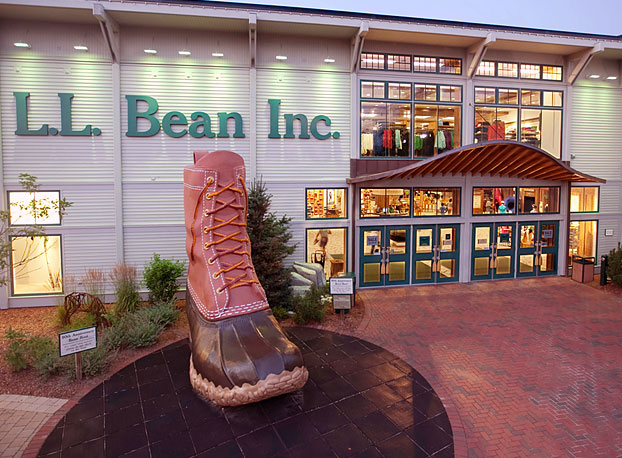Snowmaking Capacity Planning:
Increasingly a Lifeline to the Ski Industry
By Stephen Thorley
At first
thought, one might assume as cold as Ohio can be, offering downhill skiing and
snowboarding would be easy money for dedicated entrepreneurs. Truth is, Ohio’s
erratic winter weather could only support a handful of ski days each winter and
in order to keep the slopes covered, lifts turning, tickets selling (and drinks
pouring) ski areas execute the delicate balancing act that is snowmaking.
 |
Snowmaking makes a ski season
possible at Mad River Mountain in Bellefontaine, Ohio
|
Snowmaking
is extremely expensive and when snowmakers can operate is always at the hands
of often unpredictable windows of optimal weather conditions. Several of the
key factors that go into planning a snowmaking operation are:
1) Access to water: Most preferable
option is an unrestricted stream or resort-owned pond. Some ski areas suffer
from water restrictions and thus the effectiveness of the entire operation is
capped by how much water the resort can acquire.
2) Pumping Capacity: Often after a low
snow year skiers can expect to hear resorts touting pumping capacity
improvements which promise to take greater advantage of snowmaking temperature
windows. A local ski area, Mad River Mountain near Bellefontaine, Ohio can pump
7,000 gallons of water uphill every minute. According to the attached
OnTheSnow.com video, resorts can typically pump as much water uphill every
minute as the average family uses in showers over the course of a year.
Strategies for investing in snowmaking capacity can directly affect the number
of days a resort can operate each winter, and the quality of the product
(snow), which is a key factor influencing the happiness of guests.
3) Automation: A very large investment
can make snowmaking equipment much more efficient. By automating a system of
snowmaking units resorts can maximize the time conditions are right and save on
labor costs up to 30% by eliminating the need for a technician to manually
activate each unit.
4) Cold Temperatures: Obviously, water
can only freeze below 32 degrees Fahrenheit. For snowmaking to be effective,
however, a measurement of temperature and humidity called wet bulb must remain
below 28. In moderate climates like Ohio and even the east coast mountains,
there are certainly a limited number of hours each year and sometimes warm-ups
following extended periods of optimal weather. Because of the high price tag on
snowmaking hours, it is uncommon for a resort to make snow if only a few days
later a warm period would melt away the new snow.
 |
The
author enjoys the snow on a day that would have had only grassy slopes if it
were not for snowmaking technology
|
 |
Mad River Mountain snowmakers
replenishing the base following the warm spell at the end of January
|
5) Size of Checkbook: The most
substantial costs to snowmaking are labor and electricity to run the pumps. Blanketing
a single acre (55yds x 88 yds) with 12 inches of snow can cost between $1000
and $2000 and takes between 1 and 6 hours. For some perspective, Mad River
Mountain (45 minutes northwest of Columbus, OH) claims to have 144 skiable acres, meaning 12 inches could
conservatively cost $144,000. This season, Mad River has built a 30inch base
multiple times before and after 60 degree periods in January. Snowmaking
strategy is obviously key to keeping guests happy and balancing the desire for
pristine conditions, the business need to keep the slopes open, and not
unnecessarily wasting money by making snow in excess or only to see it melt
away before capturing revenue during its existence.
The need to make snow differs greatly
by size of operation, clientele, and most especially location. Because
snowmaking equipment costs millions and operating millions more, resorts’
expansion strategies have differed greatly based on location. Ski areas
receiving less natural snowfall have followed a more expansionist strategy by
investing heavily in snowmaking technology.
When these hills receive natural snow or are spared from a mid-season
melt-away of the established snow base, there is unused snowmaking capacity.
For Mad River, snowmaking is an absolute necessity since the
resort only receives 36 inches on average per year. Ohio’s frequent
fluctuations above and below freezing require a system that can take advantage
of a short cold spell. Until recently, the snowmaking network at Mad River was
larger than that at many resorts with triple the acreage and skier visits.
On the other end of the spectrum are resorts like Jackson
Hole, Wyoming and Vail, Colorado which are accustomed to 300+ inches of snow
each winter. Such resorts have followed more of a wait-and-see strategy when it
comes to snowmaking. Rocky mountain resorts have built up their existing
snowmaking networks slower over the years, often tacking on new capacity
increments after lower than average snow in a winter such as last year
(2012). These resorts may use portable
snow machines and repurpose their grooming equipment as a short-term fix when
the natural snow is absent. However, in a winter like last, resorts without the
technology in place suffered.

